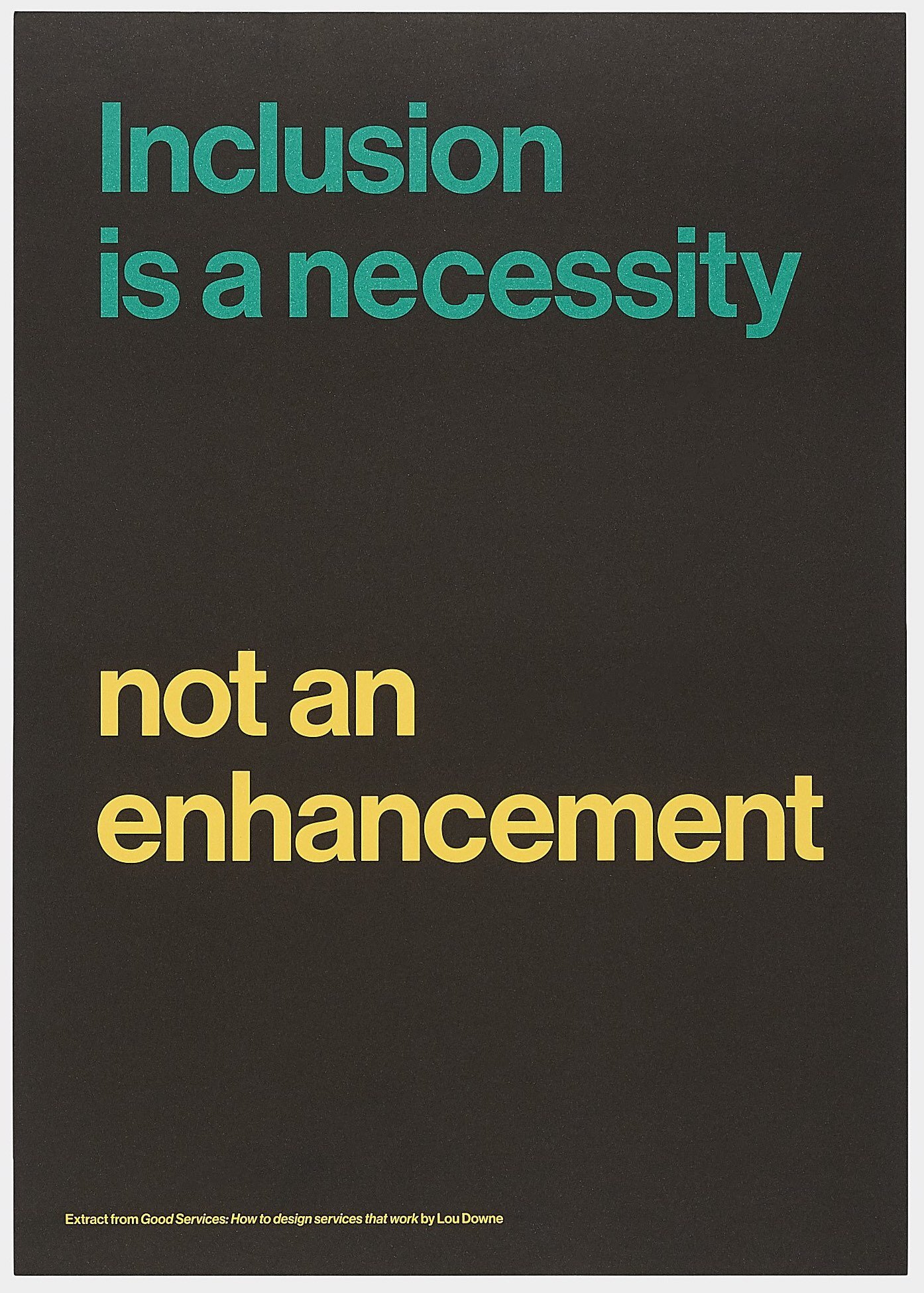15 principles of Good Service Design
11. Be usable by everyone, equally
The service must be usable by everyone who needs to use it, regardless of their circumstances or abilities. No one should be less able to use the service than anyone else
What this means in practice
No user is excluded from your service because of:
what they can do
who they are
what they have or don't have access to
You’ve achieved good when
Regardless of who your user is, and the resources they have at hand, they are able to use your service equally as well as anyone else
If your service is dependent on payment or location as a threshold of using it, try to find ways to make sure your service is accessible to users who might otherwise struggle to use it
How to do it
Make sure your service is safe
Is the service a place where this user feels that their needs are understood and represented in a way that makes them feel as if they will be accepted and comfortable using your service?
Make sure your service is perceivable
Can they physically access the information required to understand what they need to do? Is it available to one of their senses (sight, hearing or touch)?
As an example, if the information is provided as text, someone that has sight needs to be able to see it. If someone has no sight, the text needs to be available in a format that means a screen reader can convert it to audio and an electronic braille device can convert it to touch
Make sure your service is understandable
Once the user is able to perceive the information and instructions available to them, can the user understand what they need to do by understanding the instructions they’ve been given?
Make sure your service is operable
This is the benchmark of minimum service to your user – can they actually use it unaided?
For example, if someone is using a keyboard, can they still do everything that someone using a mouse can do? Can someone who can’t use the phone make changes to their account details in the same way as someone who can?
Make sure your service is robust
Can the user use the service in any channel or technology they choose to use? For web pages, this might mean that the service works as expected in the technology that someone is using, regardless of what that technology is
Make sure your service is equal
Does the service treat this person as if they were equal to any other user? Or does it sideline them into another service or experience that is less than the main service?


